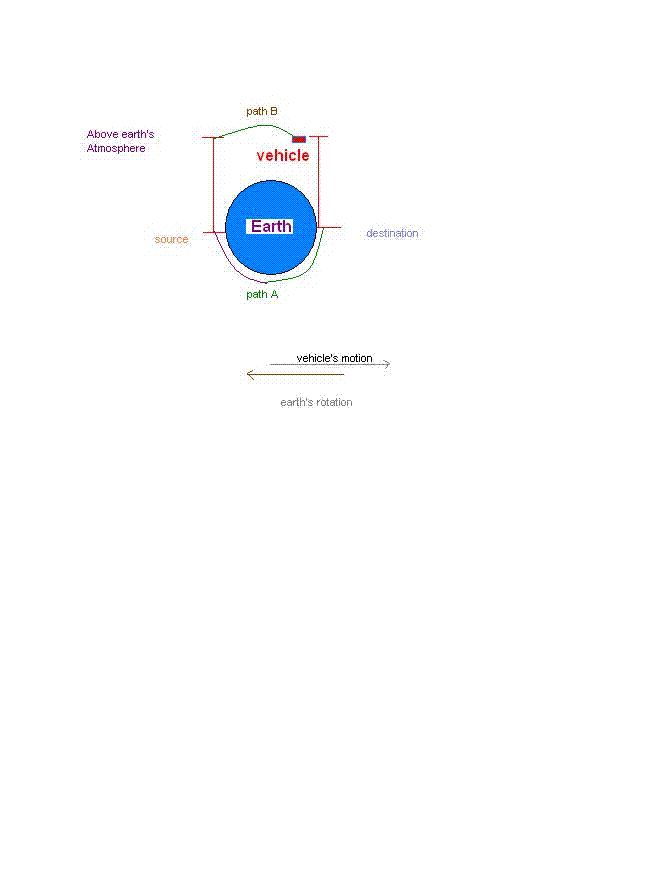rednewguy
Full Member level 2

I have an idea. suppose that we have to travel from point P(source) to point Q(destination). Let us assume that it takes Xa fuel and Ya time to reach there by path A. And assume that it take Xb fuel and Yb time to reach there by path B.
path A------Normal route taken by planes.
path B------New path. first it flies to above earth's atmosphere, travels in the direction opposite to earth's rotation towards the destination, descends from atmosphere.

Advantages:
1) As it makes most of the path above atmosphere where it is devoid of air and gravitation, we can use non-conventional energy sources thereby reducing fuel consumption.
2) As it takes the path opposite to earth's rotation, the destination is approaching us: thereby saving time taken to reach.
Disadvantages:
1) The first main concern is re-entrance into earth's atmosphere
2) As it is taking the opposite direction to earth' rotation, we may experience drag.
I dont know whether this idea will be applicable for passenger traffic, may be tried atleast for freights.
U can comment on this. both advt and disadvt.
thanks
path A------Normal route taken by planes.
path B------New path. first it flies to above earth's atmosphere, travels in the direction opposite to earth's rotation towards the destination, descends from atmosphere.
Advantages:
1) As it makes most of the path above atmosphere where it is devoid of air and gravitation, we can use non-conventional energy sources thereby reducing fuel consumption.
2) As it takes the path opposite to earth's rotation, the destination is approaching us: thereby saving time taken to reach.
Disadvantages:
1) The first main concern is re-entrance into earth's atmosphere
2) As it is taking the opposite direction to earth' rotation, we may experience drag.
I dont know whether this idea will be applicable for passenger traffic, may be tried atleast for freights.
U can comment on this. both advt and disadvt.
thanks
